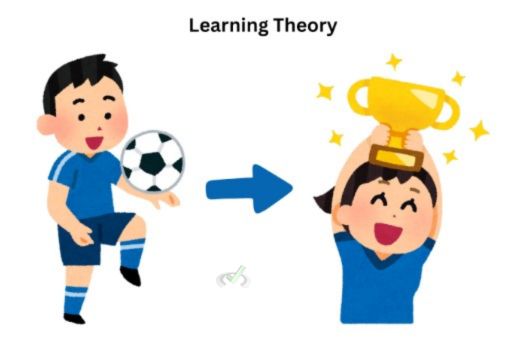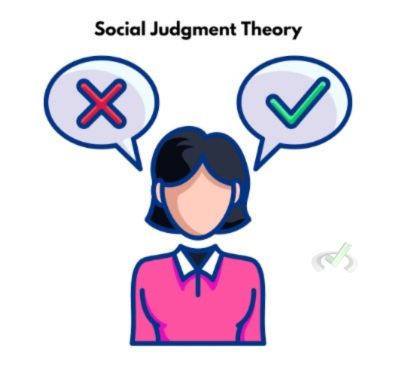Attitudes are important for understanding how we think and act in the world. They influence our thoughts, behaviors, and interactions. Let's explore the theories and components of attitudes to see how they shape our daily lives.
I. Understanding Attitudes
Attitudes are mental views or feelings we hold about people, objects, or ideas. They can be positive, negative, or neutral. For example, you might have a positive attitude toward a favorite teacher or a negative attitude toward doing homework.
II. Components of Attitudes
Attitudes comprise three key parts: cognitive, affective, and behavioral.

Cognitive Component
This involves beliefs or thoughts about something. For example, thinking that exercise is good for health is a cognitive part of an attitude toward exercise.
Affective Component
This includes emotions or feelings toward something. For instance, feeling happy when you think about your favorite sport is an affective part.
Behavioral Component
This refers to how we act toward something. For example, going to the gym regularly because you believe in the benefits of exercise is a behavioral part.
III. Theories of Attitudes
There are several theories explaining how attitudes form and change.
Learning Theory
Attitudes are learned through experiences. This can happen through direct experience, watching others, or hearing from others. For example, if you had fun playing soccer as a kid, you might develop a positive attitude toward the sport.

Functional Theory
This theory suggests that attitudes serve different purposes for people. These include:
- Knowledge Function: Helps us organize and understand information. For example, thinking that a healthy diet is good helps us make food choices.
- Ego-Defensive Function: This protects our self-esteem. For example, we may blame bad grades on hard tests instead of our abilities.
- Value-Expressive Function: This function reflects our core values and beliefs, such as valuing honesty and having a positive attitude toward telling the truth.
- Utilitarian Function: Helps us gain rewards or avoid punishments. For example, studying hard to get good grades and avoid trouble.
Cognitive Dissonance Theory
This theory, developed by Leon Festinger, explains that people feel uncomfortable when their attitudes and behaviors don't match. To reduce this discomfort, they might change their attitudes or behaviors. For example, if you believe smoking is unhealthy but you smoke, you might quit smoking to reduce the discomfort.

Social Judgment Theory
This theory, proposed by Muzafer Sherif, suggests that we judge new ideas by comparing them to our existing attitudes. We accept or reject these ideas based on how they fit with our current beliefs.

IV. How Attitudes Influence Behavior
Attitude-Behavior Consistency
Attitudes can predict behaviors, but not always perfectly. The strength of the attitude, its relevance to the behavior, and the situation all play roles. For example, a strong attitude against littering will likely result in consistent behavior, like always using a trash can.
Theory of Planned Behavior
This theory, by Icek Ajzen, explains that intentions determine behavior. These intentions are influenced by attitudes, subjective norms (what we think others expect us to do), and perceived behavioral control (our confidence in our ability to perform the behavior).
Persuasion and Attitude Change
Persuasion involves changing attitudes through communication. Factors that influence persuasion include:
- Source Credibility is how trustworthy and knowledgeable the communicator is. For example, a doctor might be more persuasive when talking about health.
- Message Content: The quality and clarity of the argument. For example, a clear and logical explanation can be very convincing.
- Audience Characteristics: The audience’s initial attitude and ability to understand the message. For example, people already interested in a topic might be easier to persuade.
V. Bridge/Overlap
Understanding attitudes connects to several important areas in sociology and psychology.
Social Influence
Social influence often shapes attitudes, such as conformity, compliance, and obedience. For example, seeing your friends do it might influence your attitude toward recycling.
Social Identity
Attitudes help define who we are and which groups we belong to. For example, having a positive attitude toward environmentalism might make you identify as an environmentalist.
Mental Health
Positive attitudes can improve mental health, while negative attitudes can cause stress and anxiety. For example, having a positive attitude toward problem-solving can help reduce stress when facing challenges.
Cultural Context
Cultural norms and values shape attitudes. Understanding cultural differences in attitudes can explain variations in behavior across societies. For example, attitudes toward authority figures can vary significantly between cultures.
Behavioral Economics
Attitudes can influence economic decisions and consumer behavior. For example, a positive attitude toward a brand can increase the likelihood of purchasing its products.
Health Psychology
Attitudes toward health behaviors (like exercising or smoking) impact health outcomes. For example, a positive attitude toward exercise can lead to a healthier lifestyle.
VI. Wrap Up/Key Terms
Let's summarize the key points:
- Attitudes: Mental views or feelings about people, objects, or ideas.
- Cognitive Component: Beliefs or thoughts about something.
- Affective Component: Emotions or feelings toward something.
- Behavioral Component: Actions toward something.
- Learning Theory: Attitudes are learned through experiences.
- Functional Theory: Attitudes serve different functions.
- Cognitive Dissonance Theory: Discomfort from inconsistent attitudes and behaviors.
- Social Judgment Theory: Judging new ideas based on existing attitudes.
- Attitude-Behavior Consistency: How well attitudes predict behaviors.
- Theory of Planned Behavior: Behavior is influenced by attitudes, norms, and control.
- Persuasion: Changing attitudes through communication.
VII. Practice
Test your understanding with these questions:
Sample Practice Question 1
What is the affective component of an attitude?
A. Beliefs about an object.
B. Emotions or feelings toward an object.
C. Actions toward an object.
D. None of the above.
Ans. B
The affective component involves how we feel about something emotionally.
Sample Practice Question 2
Which theory explains that people change their attitudes to reduce discomfort from inconsistent behaviors?
A. Learning Theory.
B. Functional Theory.
C. Cognitive Dissonance Theory.
D. Social Judgment Theory.
Ans. C
Cognitive Dissonance Theory describes the discomfort from inconsistent attitudes and behaviors and the changes made to reduce it.







 To help you achieve your goal MCAT score, we take turns hosting these
To help you achieve your goal MCAT score, we take turns hosting these 





















 reviews on TrustPilot
reviews on TrustPilot